
The medium of choice.
Throughout the ages, poetry’s relationship with the most widespread performance or communication media of literate societies has been very strong, often completely interwoven into daily life. The Ancient Greeks coupled poetry with drama and song. The Romans made it their leading literary expression. The Provencal and Old French minstrels and troubadours brought music and poetry together and introduced it into royal courts, where it became the medium of choice in French, Spanish, and English courts for centuries to come. Italian Renaissance poets often incorporated their verse with painting, literature, music, sculpture, and drama. Michelangelo’s sonnets and madrigals often took on and described the deeply passionate, roughened quality of his early-stage and unfinished sculptures. William Shakespeare re-introduced poetry to the stage. Two centuries later, Johann Wolfgang von Goethe wove poetry into his travelogues, novels, dramas, scientific studies, and academic pursuits, resuscitating the works of such ancient bards as Gaius Valerius Catullus and reigniting poetry as an art form in Germany.
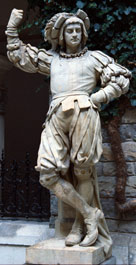
Minstrels and troubadours brought poetry and music together and made it a part of daily life.
|
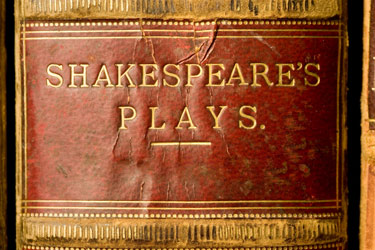
William Shakespeare reintroduced poetry to the stage.
|
The modern decline of poetry.
With the advent of motion pictures, radio, and television, the written word’s place in American mass media declined in the 20th century. Poetry went with it. From a height of more than 100 widely circulated periodicals that featured poetry, today only a few print magazines regularly feature poets and their poems, with Harper's, Atlantic Monthly, and The New Yorker leading the way.
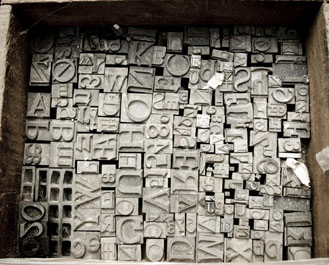
Newspapers and magazines no longer hire poets as regular contributors.
|

Magazines and newspapers write headlines using double entendres, rhymes, alliterations, oxymorons, and cultural touchstones.
|
Songs and headlines.
Poetry is like seeds blessed with eternal life. The tree might die, but its seeds sprout to form new trees. Thanks to the music of the 1960s and 1970s, and the later rise of punk and hip-hop, poetry’s relationship to perhaps our most extensive form of mass media – music – is as great as ever. Furthermore, crafty magazine and newspaper editors with a sense of beat, rhythm, and the value of poetic turns of phrase create wonderful headlines that continue the unique relationship between words and the social, political, and personal issues that touch us most. Pick up any widely-circulated magazine or tabloid newspaper and see headlines written using double entendres, rhymes, alliterations, oxymorons, or cultural touchstones that provoke images, feelings, and memories.
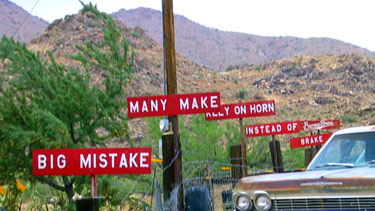
Jingles that sell.
Poetry’s relationship with advertising is more obscure. Several major print and television advertising campaigns use poetic stylings, though the catchy jingles aren’t going to win awards for poetic structure. However, advertisers use rhythm and beat to catch the eye and ear and to conjure up positive images associated with their products and services. The Burma Shave billboard campaign broke new ground in 1925 by placing sequential signs along rural roads that piqued motorists’ curiosity by revealing one rhyming line at a time. The shaving cream campaign lasted until 1963, although recreations of the roadside signs can still be seen in Arizona along the original Route 66.
Henry the Eighth
Sure had trouble
Short-term wives
Long-term stubble
Burma-Shave
Magazine, TV, and radio advertising campaigns rarely use a poem excerpt, but every jingle written must convey the same three- or four-beat rhythm that resonated with the greatest poets, or it won’t capture our attention. Thus, they focus on catchy one-liners that play on poetic meter, rather than stanzas or even couplets. The goal is to sell by striking a chord that reverberates in the hearts and minds of a target audience. For that reason, advertisers give a great deal of thought to how the advertisement will be absorbed into the cultural landscape.
The real thing.
In 2006, the Coca-Cola company commemorated three achievements: the 120th anniversary of the company, the 90th anniversary of its signature bottle shape, and the 35th anniversary of one of most memorable lyric poem-songs to be used in advertising, "I’d Like to Buy the World a Coke," which appeared in the commercial, "Hilltop."
During its history, Coca-Cola has used 46 different slogans, some of which were more poetic than others. "Drink Coca-Cola," from 1886, may have little artistic merit, and "Whoever You Are, Whatever You Do, Wherever You May Be, When You Think of Refreshment Think of Ice Cold Coca-Cola" from 1939 isn’t exactly melodic. Yet "The Great National Temperance Beverage" spoke to the concerns of the citizenry in 1906, while 1932’s "Ice Cold Sunshine" may have been welcome relief for those suffering from the Great Depression.
But for those reeling from the turbulent times of the late 1960s, Coca-Cola’s 1972 "Hilltop" television commercial was a sign of hope and unity. In it, 65 actors from 20 countries lip-synched a song written by Billy Backer and Billy Davis and performed by The New Seekers:
I’d like to buy the world a home
And furnish it with love
Grow apple trees and honey bees
And snow white turtle doves
(Chorus)
I’d like to teach the world to sing
In perfect harmony
I’d like to buy the world a Coke
And keep it company
That’s the real thing
(Repeat Chorus)
(Chorus 2)
What the world wants today
Is the real thing
(Repeat Chorus 2)
As if to illustrate that poetry sometimes resonates more with visual elements, the commercial was first recorded as a radio advertisement. Coca-Cola bottlers didn’t like the song and wouldn’t pay for the radio airtime. The advertising agency convinced the company to spend an unprecedented $250,000 to add a visual component. Once the television commercial aired, radio stations were inundated with requests to play the song, which later became a Top 40 hit.
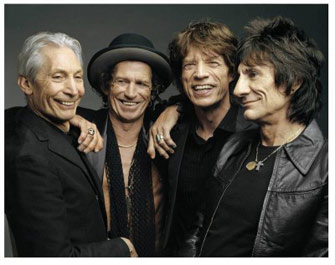
New twists on old lyrics.
Since 2001, rock and hip-hop have contributed to increased poetry and lyrics in advertising. Because advertising executives recognized that Baby Boomers would respond to nostalgia, lyrics and songs that revolutionized a world and expressed poetry made their way into commercials. Beginning with Cadillac’s campaign, which used Led Zeppelin’s "Rock and Roll" for pacing and atmosphere, the music of lyric-centered bands as diverse as the Rolling Stones (Chase, Lexmark), T. Rex (Coca-Cola), The Who (Cisco Systems, Hummer), Aerosmith (Buick), Nina Simone (Buick), Deep Purple (Dodge), the Allman Brothers (Cingular/AT&T), and Billy Preston (Fidelity Investments) have populated commercials. Ironically, bands and musicians that frowned on TV in their heyday now enjoy golden journeys because of the millions of additional CDs and downloads they’ve sold as a result of TV exposure.
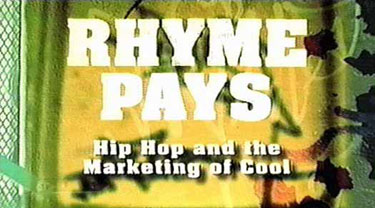
Footnotes in television.
In the past two decades, there have been just four major television shows exclusively focused on poetry: HBO’s "Russell Simmons Presents Def Poetry," BBC-2’s "Essential Poems," and the Bill Moyers PBS specials, "The Language of Life" and "Fooling With Words." Still, other television shows sometimes incorporate poetry or references to poetry. "The West Wing" often included snippets of poetry, such as when President Bartlett quoted Pulitzer Prize-winning poet Theodore Roethke’s "Infirmity" by saying, "How body from spirit does slowly unwind / Until we are pure spirit at the end." During the third season of the show, the series aired an episode titled, "The U.S. Poet Laureate," featuring guest star Laura Dern, and throughout the fourth season, an aging Chief Justice had a penchant for writing U.S. Supreme Court opinions in verse. Yet another character had a habit of speaking in iambic pentameter when she was nervous.

Russell Simmons Presents Def Poetry is one of the few television shows working to give voice to poetry.
|
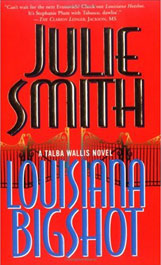
Poetry makes its way into popular fiction in books like Julie Smith’s Talba Wallis series.
|
Pop-ups in popular fiction.
While books of poetry rarely find their way to the top of the bestseller list, poetry does make its way into popular fiction. Julie Smith, who writes what she terms "New Orleans Noir," features the character Talba Wallis in a series of mysteries. Wallis is a gumshoe by day, but assumes the persona of The Baroness de Pontalba when she performs her original poetry at local venues. Smith’s novels are liberally sprinkled with The Baroness’ poetry, exposing many readers to the popularity of verse in The Baroness’ world.
A Hollywood love story.
The relationship between poetry and the other emergent mass media form of the 20th century – the motion picture – has been even warmer. Many hundreds of movies and studios have utilized poetry in their screenplays to convey knowledge and emotion, or to portray the movie’s setting. Memorable examples include Kevin Kline reciting Emily Dickinson in Sophie’s Choice and Percy Bysshe Shelley in In And Out, e.e. cummings read by Barbara Hershey in Hannah and Her Sisters, W.H. Auden’s "Funeral Blues" read by John Hannah in Four Weddings and a Funeral, and the poems of William Blake and Henry Wadsworth Longfellow used to close the card-game scene in In The Bedroom. A reading of Dickinson in Seabiscuit – "We never know how high we are" – became the mantra that inspired jockey Red Pollard.

Barbara Hershey reads e.e. cummings in Hannah and Her Sisters.
|
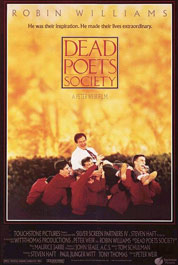
Hollywood has had a torrid love affair with poetry, as epitomized by Dead Poet’s Society.
|
The roots of poetry are also understood by many advertising agencies and editors. Even though our market-based society requires a more subtle use of poetry, we still feel the cadence and stir to the music of a well-turned phrase, just as listeners did on torchlit streets centuries ago.
